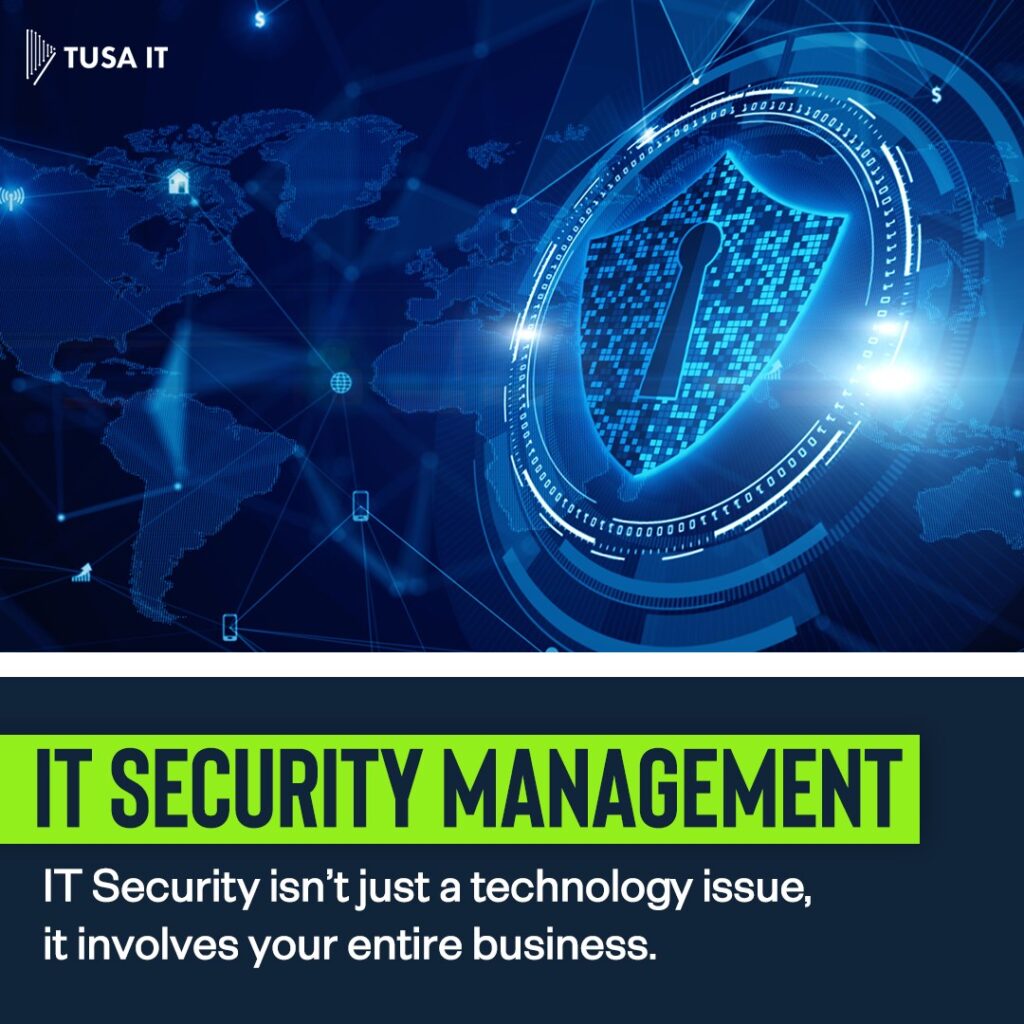IT Security Management.
Billions were affected by cyberattacks and data breaches in recent years, yet data collection is proving increasingly more valuable in improving engagement. Trust and transparency are top criteria for not only consumers and patients but also partners and other stakeholders in your business. Defining a cybersecurity program that ensures confidentiality, integrity, and the ability to safely access information is imperative for long term success and sustainability.
- Information Security Strategy
- Information Security Governance and Compliance
- Information Security Technology
- Information Security Awareness Training
An effective cyber security strategy is not simply a defensive protocol but a comprehensive blueprint to enhance a companies resilience against cyber attacks.
It addresses various aspects of information security, from protecting sensitive data and managing user access to fortifying the IT infrastructure and ensuring compliance with relevant regulations.
It translates the companies security objectives into actionable policies, processes, and technologies, providing a coherent framework for managing cyber risks.
Information Security Governance & Compliance is a vital component of safeguarding your organization’s sensitive data and ensuring regulatory adherence. Our expert team specializes in providing comprehensive solutions to companies seeking robust information security practices. Here’s how we can assist your organization:
Risk Assessment and Management:
- We conduct thorough risk assessments to identify vulnerabilities and potential threats.
- Our team helps you prioritize risks and develop mitigation strategies.
- By aligning risk management with business objectives, we enhance security posture.
Policy Development and Implementation:
- We create customized information security policies tailored to your industry and organizational needs.
- These policies cover data protection, access controls, incident response, and more.
- Implementation ensures consistent adherence across your company.
Compliance Frameworks and Standards:
- We guide you through compliance frameworks such as ISO 27001, GDPR, HIPAA, and others.
- Our experts help you achieve and maintain compliance, minimizing legal and financial risks.
- Regular audits and assessments ensure ongoing adherence.
Security Awareness Training:
- Educating employees is crucial for effective security.
- We offer training programs to raise awareness about best practices, phishing prevention, and data handling.
- Empowered employees contribute to a secure organizational culture.
Incident Response Planning:
- In the event of a security breach, having a well-defined incident response plan is essential.
- We assist in creating and testing incident response procedures.
- Timely and effective responses mitigate damage and protect your reputation.
IT risk management is a crucial aspect of maintaining a secure and resilient business. It involves a systematic process of identifying, assessing, and controlling the technology that potentially threaten sensitive resources. Here are the key steps in effective IT risk management:
-
Risk Identification: Begin by identifying all potential risks that could impact your website’s processes and information security. This includes threats related to data breaches, system vulnerabilities, and cyberattacks.
-
Risk Assessment: Evaluate the likelihood and impact of each identified risk. Understand the odds of a risk being exploited and prioritize them based on their severity.
-
Risk Prioritisation: Once risks are assessed, prioritise them according to their potential impact. Some risks may require immediate attention, while others can be addressed over time.
-
Risk Appetite: Define your organization’s risk appetite. Understand how much risk you are willing to tolerate and set appropriate risk thresholds.
-
Risk Mitigation: Implement measures to mitigate risks. This could involve enhancing security controls, patching vulnerabilities, or improving employee training.
-
Risk Transfer: Consider transferring certain risks through insurance or third-party agreements. For example, outsourcing certain services may transfer associated risks to the service provider.
-
Risk Monitoring and Compliance: Continuously monitor risks and ensure compliance with security policies and regulations
